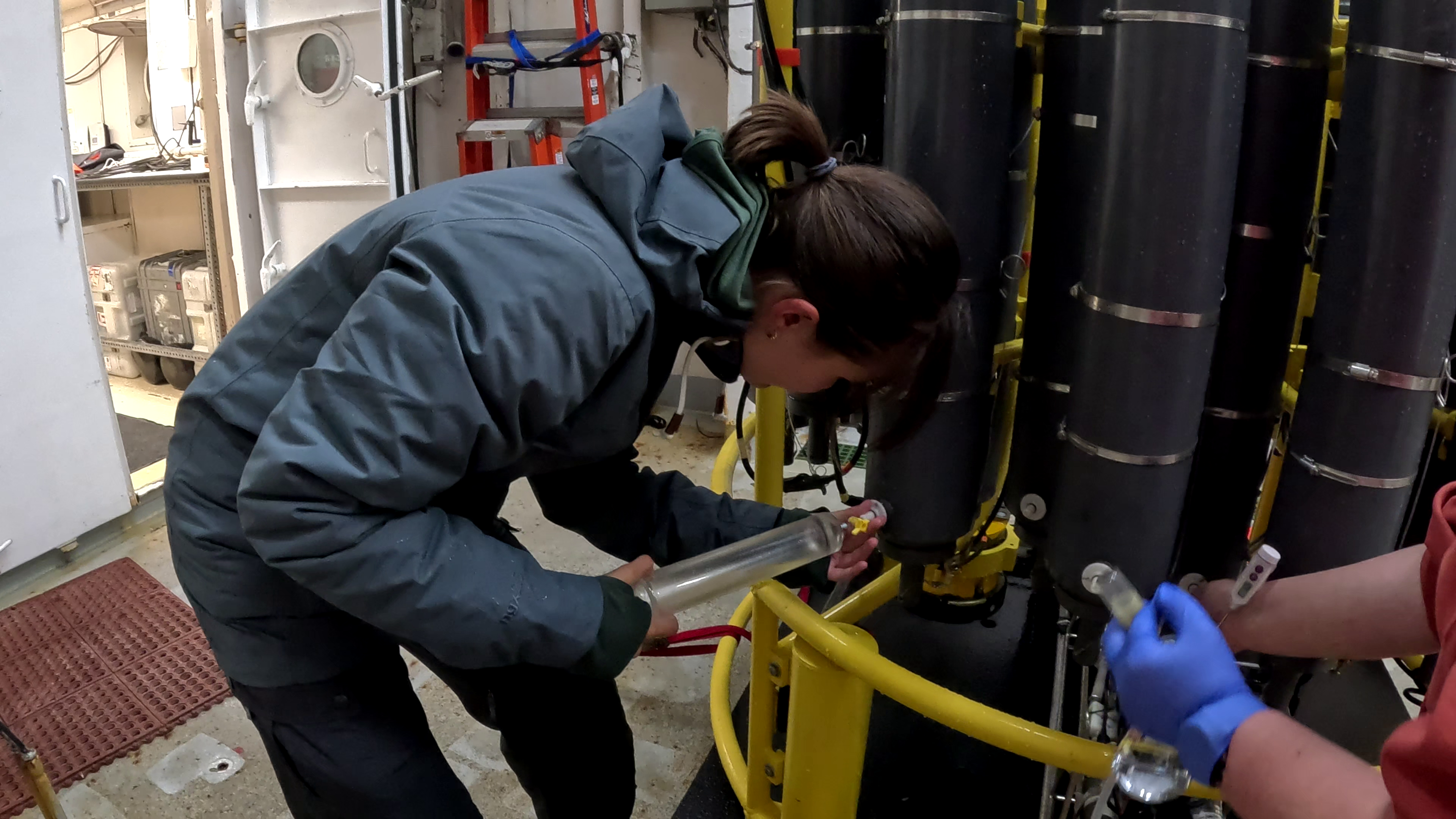GO-SHIP IO5: Life at Sea
What is life at sea like?
CTD Watch-standers Log: July 25
The RV Roger Revelle departed Fremantle, Australia on July 22 at 0600 as part of the GO-SHIP program. It is only day 4 of our research and already, this has been the most exciting and eventful experience of my life. I am part of the team studying the dissolved gases: SF6, CFCs (chlorofluorocarbons), and N2O onboard this cruise under the supervision of Dr. Mark Warner from University of Washington. Within minutes of our transit, I had regained my sturdy sea legs. This was important to me as many crew members were warning us scientists of the rough weather that could potentially plague our journey across the Indian Ocean in the weeks to come. Within hours of the transit, I had learned how to operate the analytical system which includes three GCs (gas chromatographs) to measure the different dissolved gases. This was somewhat similar to running the MIMS (membrane inlet mass spectrometer) in Dr. Bourbonnais’ Stable Isotope Laboratory. Within days of the transit, I had learned how to collect water samples from the niskin bottles attached to the CTD (conductivity, temperature, depth) using special custom-fit syringes. Since this experiment uses syringes instead of bottles to collect samples, the sampling techniques are very different (i.e. much more difficult) from what I previously knew, and the other scientists on my 12-hour shift recognized that. In fact, after I had successfully collected all of my water samples for the first time, they gave me a round of applause! Their support and enthusiasm gave me such a great feeling of pride and acceptance. I am so happy to be a marine scientist!
This research is teaching me a lot of new and valuable skills including learning how to fall asleep to the sound of engines roaring all night and more importantly, learning the relentless power of the ocean. The weather has been rough for two days now. Anything that is not bolted to the walls of the ship or pinned down with ratchet straps and bungee cords gets thrown across the room with every wave, including gym equipment that weighs hundreds of pounds. Imagine eating a yummy lunch with all the scientists and crew members, then getting launched from your seat across the galley floor! That isn’t an imaginary scenario… it happened to a young scientist today. The wind is strong, the waves are tall, and the current is killer. At midnight, last night, a worse-case scenario happened to our dissolved gases chemical laboratory. We had been operating in a small, temporary building that looks similar to a shipping container. All of our high-precision instruments, compressed gas cylinders, lab notebooks, etc. were in this building when a giant wave crashed over the port side of the boat and smashed into the metal door, instantly crushing it and flooding the inside of the building. Thankfully, no one was injured but some of the floor-level equipment was irreparable. There was space in the hydro-laboratory inside of the research vessel for us to relocate everything, but it has taken all day to set up our instruments in the new lab space, meaning we haven’t been able to collect or analyze samples. The silver-lining of this horrible event is that I have gotten to take apart the instruments and put them back together again, which is my favorite way to learn. Hopefully, we will be able to resume our important research soon, but until then we will continue to work hard (and try not to fall out of bed when the waves hit).
~Maggie Gaspar

